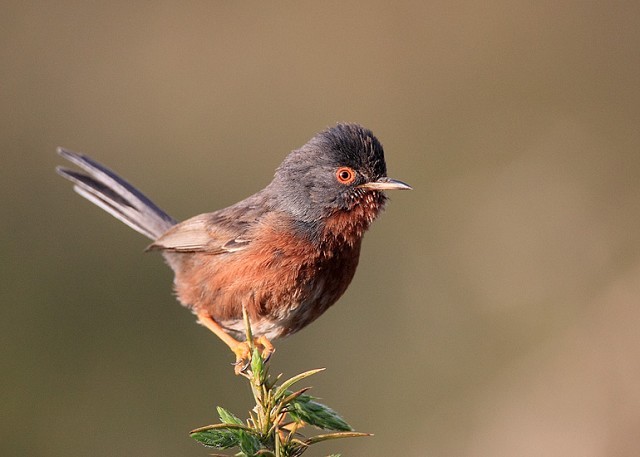Survey work confirms Dartford Warbler crash on Thames Basin and Wealden Heaths SPAs
Survey work on the Thames Basin and Wealden Heaths SPAs in summer 2009 has confirmed that the Dartford Warbler population has crashed from an estimated 1001 pairs last year to 117 in 2009, a decrease of 88%. This is attributed to heavy snowfall in the area in early February 2009.

Dartford Warbler, undisclosed site, Devon (Photo: John Fielding)
The importance of the two SPAs for the species is demonstrated by the results of the national survey of the species in 2006, organised jointly by the Royal Society for the Protection of Birds and the British Trust for Ornithology. This found a total population for England and Wales of 2536 pairs, of which 654 (26%) were found on the two SPAs.
Despite the loss of much heathland habitat in the last 100 years, numbers in the area probably reached an all-time high in the first decade of the new century, with 970–1000 pairs in 2003–2005, a reduction following a cold spell in February 2006, and a steady recovery to the total recorded in 2008. Our winter weather was much harsher in the 18th and 19th centuries, and the Dartford Warbler was not found in England until 1787, when it was discovered near the town of that name. It was unknown to the celebrated naturalist and clergyman Gilbert White, who lived at Selborne, adjacent to prime Dartford Warbler habitat, until his death in 1793. Occasional cold winters in the 20th century, such as those in 1916/17, 1938/39–40/41, 1946/67, 1962/63 and 1978/79 resulted in local extinctions that prevented the build-up seen in recent years.
Although Dartford Warblers have been doing well on both the Thames Basin and Wealden heaths in recent years, the devastating effect of this winter has shown how vulnerable these birds really are. It underlines the need for continuing efforts to improve and extend the heathland habitat on which the species depends.

